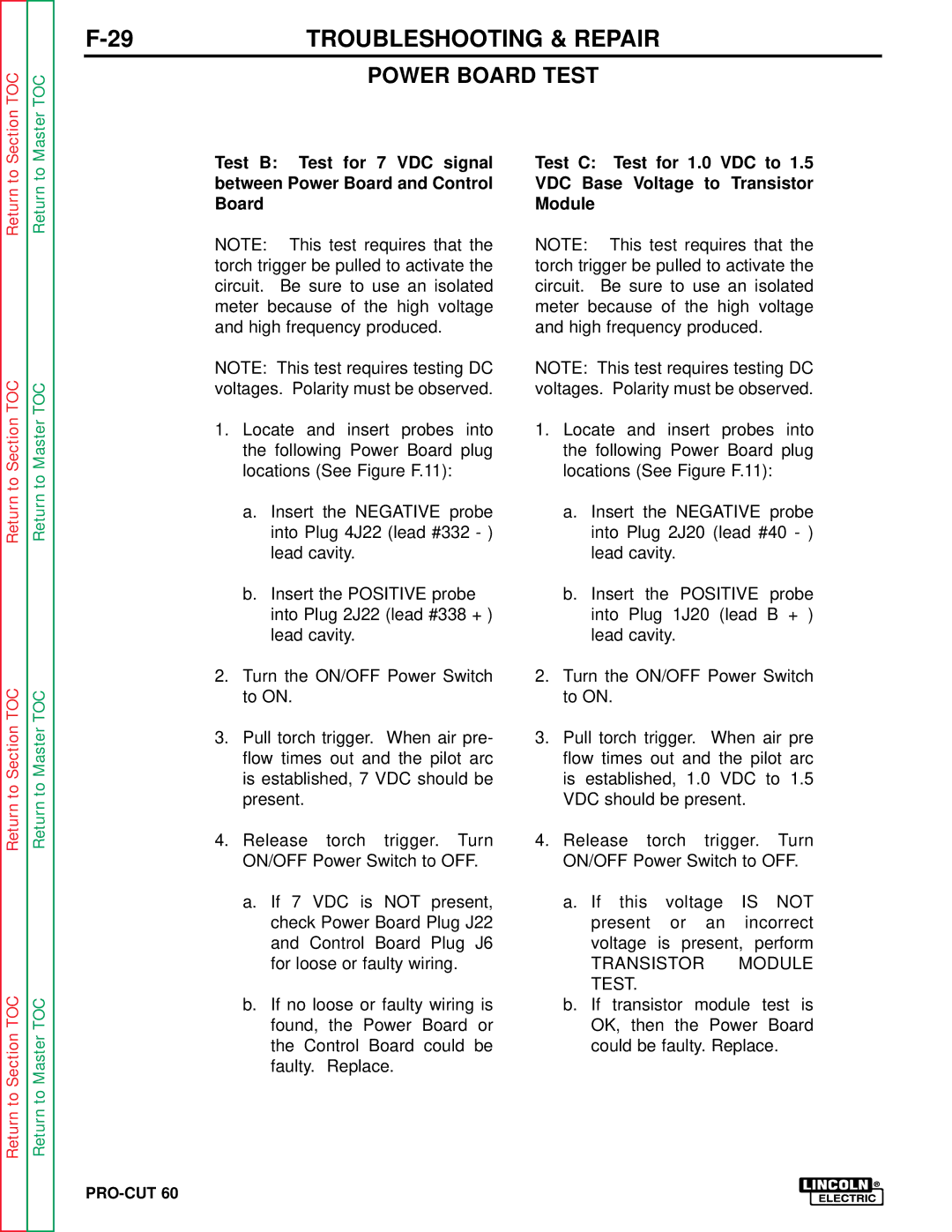
Section TOC
Master TOC
TROUBLESHOOTING & REPAIR |
POWER BOARD TEST
Test B: Test for 7 VDC signal between Power Board and Control Board
NOTE: This test requires that the torch trigger be pulled to activate the circuit. Be sure to use an isolated meter because of the high voltage and high frequency produced.
NOTE: This test requires testing DC voltages. Polarity must be observed.
1.Locate and insert probes into the following Power Board plug locations (See Figure F.11):
a.Insert the NEGATIVE probe into Plug 4J22 (lead #332 - ) lead cavity.
b.Insert the POSITIVE probe into Plug 2J22 (lead #338 + ) lead cavity.
2.Turn the ON/OFF Power Switch to ON.
3.Pull torch trigger. When air pre- flow times out and the pilot arc is established, 7 VDC should be present.
4.Release torch trigger. Turn ON/OFF Power Switch to OFF.
a.If 7 VDC is NOT present, check Power Board Plug J22 and Control Board Plug J6 for loose or faulty wiring.
b.If no loose or faulty wiring is found, the Power Board or the Control Board could be faulty. Replace.
Test C: Test for 1.0 VDC to 1.5 VDC Base Voltage to Transistor Module
NOTE: This test requires that the torch trigger be pulled to activate the circuit. Be sure to use an isolated meter because of the high voltage and high frequency produced.
NOTE: This test requires testing DC voltages. Polarity must be observed.
1.Locate and insert probes into the following Power Board plug locations (See Figure F.11):
a.Insert the NEGATIVE probe into Plug 2J20 (lead #40 - ) lead cavity.
b.Insert the POSITIVE probe into Plug 1J20 (lead B + ) lead cavity.
2.Turn the ON/OFF Power Switch to ON.
3.Pull torch trigger. When air pre flow times out and the pilot arc is established, 1.0 VDC to 1.5 VDC should be present.
4.Release torch trigger. Turn ON/OFF Power Switch to OFF.
a.If this voltage IS NOT present or an incorrect voltage is present, perform
TRANSISTOR MODULE TEST.
b.If transistor module test is OK, then the Power Board could be faulty. Replace.
